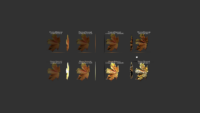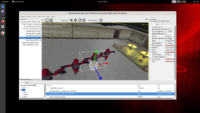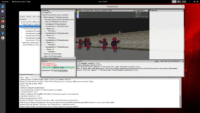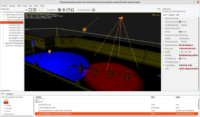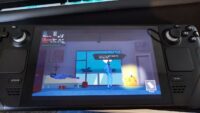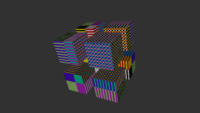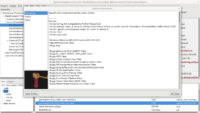 |
We have 2 big features in-progress right now:
-
physics branch, by Andrzej Kilijański, with new features related to physics and more comfortable usage of physics in CGE editor. This includes:
- AutoSize for physics colliders,
- rigid bodies and colliders that can be added and configured using CGE editor,
- ability to test physics in editor at design-time,
- API to apply physics forces using Pascal,
- example behaviors that define persistent forces existing in the world.
-
new-cameras branch, by Michalis, with new features for cameras, including better camera and navigation in CGE editor. This includes:
- TCastleCamera is now a TCastleTransform that exists in the world,
- camera can have children,
- camera can be a child of something else (like an animated bone, or mounted on top of a moving car),
- you can have multiple cameras in the world,
- we display preview of selected camera,
- soon: separate design-time and run-time camera/navigation,
- soon: activate navigation by right mouse button similar to other game engines.
In the meantime, we have small new features in the master CGE branch of editor:
-
New menu item “Help -> System Information” shows
- Rendering (OpenGL) information
- Audio (OpenAL) information
- Other (CGE version, compiler, platform)
You can view the information and easily save it to file (e.g. to attach to CGE bugreport).
This is also synchronized with a cleanup in default log output that I did recently. Logs are much less verbose now by default, to encourage you more to use these logs yourself, for your game. The engine is supposed only to log some extremely crucial things (or warnings), to let the logs be most useful for your application. You can still set
LogGLInformationVerbose:=trueandTSoundEngine.LogVerbose:=trueto have verbose logs, they are just shorter by default.Note a small trick I used there: as we need to initialize some OpenGL context to get OpenGL info, and we need to initialize sound engine to query it… I decided to have some fun, and not even try to hide it. So the “Help->System Information” plays a simple looping 3D animation and spatial sound, to visually/audibly also communicate that rendering/audio works 🙂
-
You can select multiple components with Shift in the hierarchy view.
-
The overloaded “Design” menu was split into “Design” and “Edit”.

